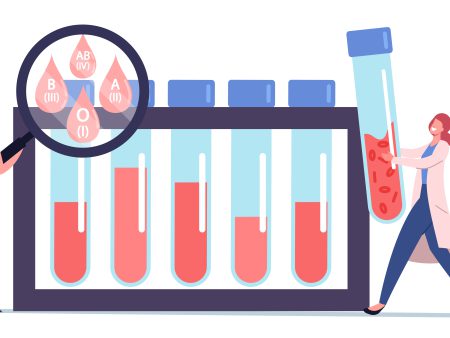
This article offers a complete guide to carrying out a DNA ancestry test. It begins with the choice of DNA kit, followed by the reception of the kit and the importance of scrupulously following the instructions provided. The results obtained will then be deciphered for a better understanding of the genetic data. The crucial question of confidentiality will also be addressed, as will the potential surprises that could arise from the results. Finally, an in-depth exploration of the benefits inherent in these tests will be presented.
The choice of DNA ancestry test
Selection criteria
The first step in carrying out an DNA ancestry test is to choose the right kit. Several factors need to be considered when making this decision. These include the accuracy of the results, the amount of genetic detail provided and the kit’s ease of use. Accuracy is paramount, as it defines the reliability of information on ethnic and geographical origins. The amount of genetic information must be large enough to cover various regions of the world, to have a complete representation of ancestors.
Buying a suitable kit
Having considered these criteria, it’s time to choose the right product to meet these needs. DNA kits are available in various price ranges, with different features depending on cost. Several specialist companies also operate in this sector, such as Quick DNA, EasyDNA, MyHeritage and Ancestry, which offer their own DNA kits specially designed to trace family history and discover ethnic origins with remarkable scientific precision.
It is imperative that the kit selected complies with current ethical and legal standards relating to the confidentiality of personal genetic data.
A carefully considered purchase will not only allow you to embark on a fascinating journey into your ancestral past but will also ensure a seamless experience throughout the process.
Receiving the DNA Kit
Once the DNA kit has been chosen and ordered, it’s inevitable to anticipate its delivery. Usually, within one or two weeks, the precious parcel reaches its recipient.
The contents of the package are simple: a tube to hold the saliva sample, precise instructions to guide the user through the procedure, and a pre-stamped envelope to send the sample to the laboratory.
The kit’s ergonomic, intuitive design is a major factor in its success. Everything is designed to make the task easier for the customer, who simply must follow the steps detailed in the instructions provided.
Once the sample has been taken in accordance with the above recommendations, all that remains to be done is to carefully seal the envelope containing the saliva tube before mailing it. The return journey then begins to the laboratory, where the necessary analyses will be carried out to obtain a complete genetic profile reflecting the ancestral origins.
Following instructions
The sampling process
The crucial step in the ancestry DNA testing process is undoubtedly the correct collection of the sample. The aim is simple: to obtain an adequate and representative quantity of buccal cells for DNA extraction. To achieve this, it is commonly recommended to vigorously rub a brush or cotton bud inside the cheek for around 60 seconds.
- It is not advisable to eat, drink, smoke or brush your teeth at least one hour before sampling.
- Firm yet gentle pressure should be applied when rubbing to ensure good collection.
- The sample must be handled with care to avoid contamination.
- To maximize the chances of an accurate result, two swabs are often used per kit.
- After sampling, the swabs must dry naturally at room temperature before being placed in the hermetically sealed bag supplied in the kit.
Proper sample shipping
Once your sample is dry and correctly packaged according to the original DNA kit manufacturer’s instructions, it’s time to ship it. This must be carried out quickly, to ensure that the quality of the sampled cells is not affected by prolonged exposure to sub-optimal conditions.
It is crucial to fill in all shipping documents correctly, and to ensure that the sample is properly identified. Please ensure that the parcel is properly sealed before posting. The kit should be sent to the analysis laboratory indicated by the company supplying the test.
Following these steps will ensure optimal analysis of your genetic data and therefore a reliable result concerning your genetic origins.
Deciphering the results
Interpreting the genetic report
Understanding the interpretation of the genetic origin report is crucial to deciphering one’s biological heritage. This invaluable document reveals the history of your ancestors, based on specific DNA variations. It is usually divided into several parts – a general overview of the lineage and more specific elements relating to regional populations.
Decoding ancestry
This part involves deciphering the exact ethnic roots. The results show a diversity of cultural and geographical heritages. They shed light on human migratory movements and ethnic groups linked to your ancestral DNA.
Deepening genealogical knowledge
DNA testing contributes to a better understanding of one’s genealogy, highlighting not only direct family connections, but also more distant ones with other people sharing the same DNA. It is also useful for detecting certain hereditary traits or diseases that can be transmitted genetically within the family.
Managing data confidentiality
When it comes to original DNA testing, data confidentiality is a key issue. Companies with expertise in this sector take this element very seriously and comply with current regulations on the protection of personal information.
This implies that all details provided during kit registration are secure and will not be disclosed without the user’s formal authorization. The saliva sample is anonymous, and a simple barcode is used to identify it for laboratory processing.
It is important to note that these companies often offer users the option of permanently deleting their data from the system if they so wish. A further reassurance for those who are still reluctant to have their ethnic origins tested for fear of malicious or unauthorized use of their genetic data.
Confronting surprises
Are you ready for some surprises when interpreting your DNA results? This is a question every genealogy novice should ask themselves before initiating a DNA origin test.
Unpredictability is the beauty of genetic science. DNA testing can reveal surprising information about your ancestry, unimagined until now. You could discover diverse ethnic origins, or even reveal little-known biological parents.
This can turn your self-perception upside down and be confusing. So, it’s vital to be emotionally prepared for these potential discoveries before the test.
It’s worth noting that a result doesn’t tell the whole story about a person – it’s just one piece of the complex puzzle that is our genetic inheritance. Personal identity goes far beyond this, incorporating experiences, family ties and upbringing.
Taking a DNA test means embarking on a fascinating journey of discovery of the ancestral self, with all its potential surprises. The results can sometimes be unsettling, but they’re always invaluable, offering a better understanding of our roots and helping us to know ourselves better.
Making the most of the benefits
Discovering biological links
DNA testing offers a unique opportunity to discover one’s biological parents. An examination of genetic origin enables ancestral filiation to be traced, revealing unknown or forgotten procreators. This discovery can shed new light on personal identity and strengthen family relationships.
Appreciation of cultural heritage
In addition to establishing biological connections, an original DNA test also gives you the chance to embrace your cultural heritage. By revealing geographic and ethnic roots, it helps you reconnect with your ancestral civilization and enrich your understanding of the surrounding world. A 2018 study by National Geographic illustrated how genetic material can be used to trace an individual’s geographic origins and identify ancestral movements.
- Precise details of ancestral regions
- Retrieving historical and cultural data relating to ancestors
- In-depth understanding of cultural heritage
- Stimulating opportunities to explore diverse cultures around the globe.
Time extension
A major advantage of this tool is that these tests offer a concrete method for extending genealogical research over time. They can serve as a gateway to the distant past, far beyond the reach of written archives. In this way, they add an extra dimension to genealogical research, making it possible to explore family history over centuries and even millennia.












